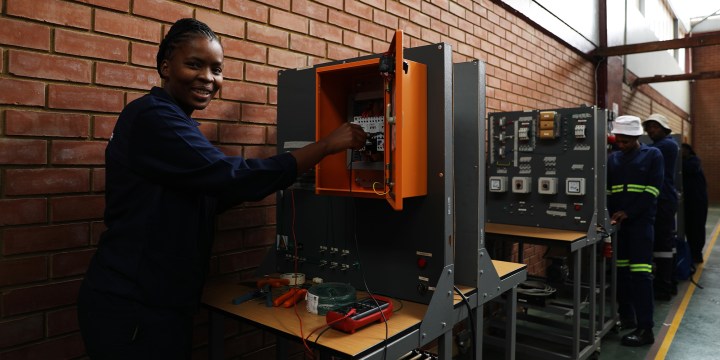TVET BOOST
Rise of the artisan – jobs in the sector are in higher demand

The National List of Occupations in High Demand, launched by the Department of Higher Education last week, saw artisan jobs as being in higher demand this year than two years ago. This comes as the government continues to shift its focus towards the TVET sector in the fight against unemployment.
If you’re looking for employment in 2020, you’re likely to find work in the artisan sector. This is according to the latest National List of Occupations in High Demand (OIHD) in South Africa.
The list, launched by the Department of Higher Education, Science and Innovation during a briefing on Thursday, identifies 345 high-demand occupations in broad-ranging sectors such as tourism, agriculture, and finance. Research for the list was done by the Labour Market Intelligence research programme.
“This list is updated every two years, and marks an important step towards helping us understand better the needs of the labour market and signals opportunities where our students and graduates are likely to stand a better chance of finding employment,” said Higher Education Minister Blade Nzimande during the briefing.
Findings from this year’s OIHD saw more artisan jobs identified as being in high demand compared with 2018. While 23 jobs made the list previously, 27 were included this time around. Artisans have specialised skills in often manual labour occupations. These include carpenter, toolmaker and diesel mechanic.

A number of artisan jobs were marked red in the report, indicating that the sector the job fell under might recover slowly from the impact of Covid-19, or show signals of decreased labour demand due to Covid-19. The pandemic was considered a limitation to the final list since it will likely cause a huge shift in the country’s economic landscape.
Based on the OIHD, jobs are considered in high demand if they:
- have shown relatively strong employment growth over the past years
- are currently showing relatively strong employment growth
- are expected to show relatively strong employment growth in the future
- have been identified as being in shortage in the labour market, or
- are new and are expected to emerge in the near future as a result of innovation, technological advancements, the development of new industries, or government’s strategic priorities.

To tackle youth unemployment, the government shifted its focus in 2020 towards the Technical and Vocational Educational and Training (TVET) sector. StatsSA figures for April 2020 placed unemployment for young people aged 15 to 34 at 34.1%.
During his State of the Nation Address in February, President Cyril Ramaphosa said nine new TVET Colleges would be built across the country.
Pursuing a university qualification, however, is often seen as more desirable than attending a TVET College. Figures from StatsSA show that in 2016 the number of graduates from universities was more than 200,000 while TVET colleges had less than 140,000.
StatsSA also indicated that TVET colleges could improve the employability of youth by alleviating skills shortages. The sector, however, has faced a number of challenges including poor infrastructure and outdated curricula.
The OIHD indicated that a high number of South African electricians and millwrights were struggling to find employment despite being in high demand across multiple sectors.
“Given the representation that there are many unemployed electricians and millwrights in the country, further study should be made to assess whether the mismatch between the number of qualified electricians and millwrights and the demand for electricians is due to a skills mismatch (ie, employers requiring electricians and millwrights with certain skills those electricians and millwrights do not possess), or whether something else is driving this low absorption of electricians and millwrights into the country’s labour force,” the technical report read.
The Labour Market Intelligence research programme has begun a dedicated research project to look at the supply and demand of artisans in the country. DM


















 Become an Insider
Become an Insider
Comments - Please login in order to comment.